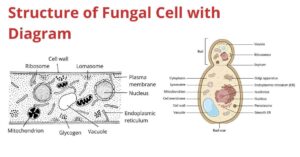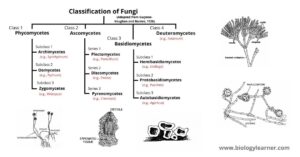
Structure of Fungal Cell with Diagram
Fungi are eukaryotic, spore-bearing microorganisms. They are heterotrophic (i.e., can’t produce their own food through photosynthesis) and digest food externally by releasing hydrolytic enzymes into their surroundings. Fungi have unicellular…









